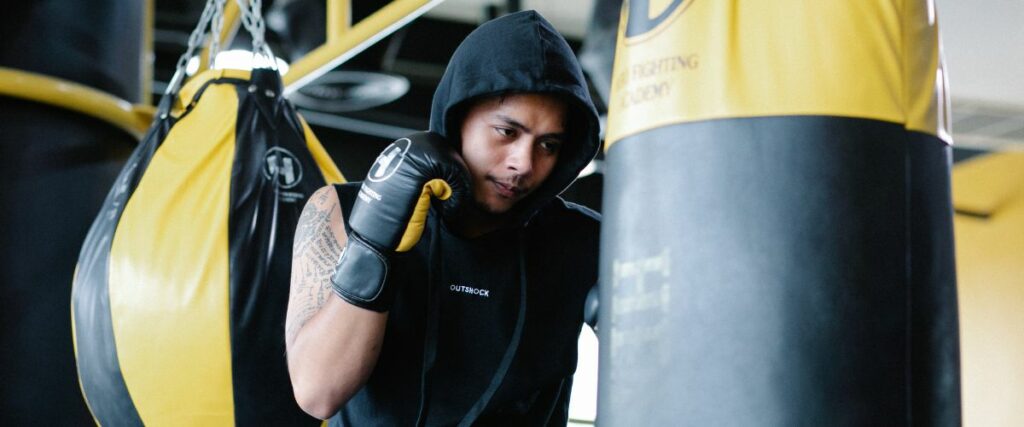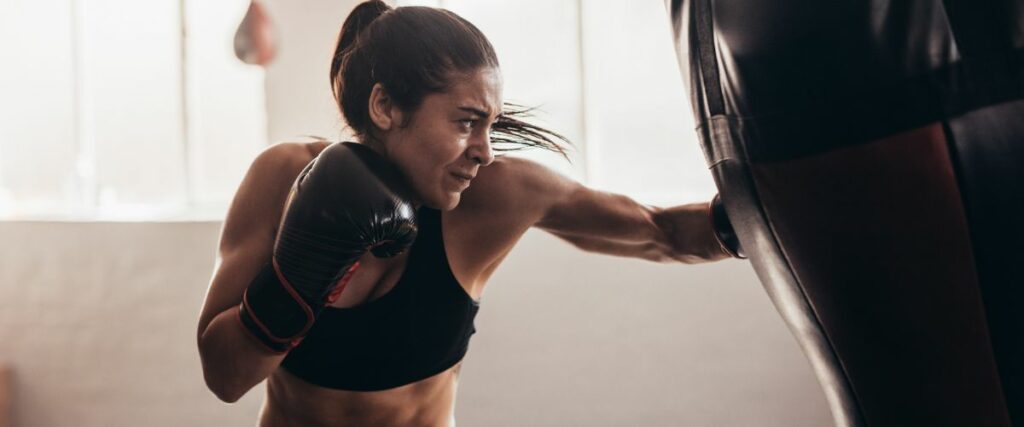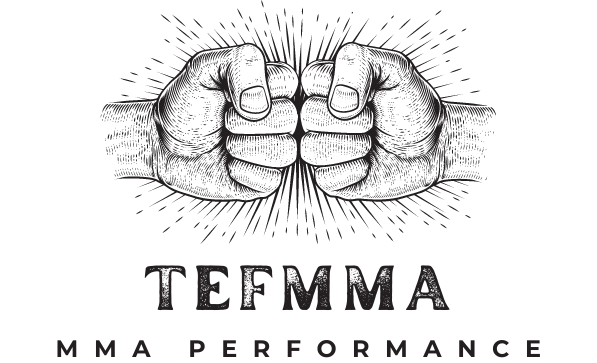Most boxers have sculpted athletic bodies worthy of envy. Many people would also like to have that “fighter’s body,” but without actually doing the fighting. So they usually start using a heavy bag as one of the best workouts found in boxing. But does it actually build muscle?
Punching a heavy bag is not good for building muscles because it does not produce enough tension and stress to stimulate muscle growth. However, it is excellent cardio, endurance, and punching power-building workout.
Being such a challenging and effective workout, heavy bag work seems like an excellent muscle-building activity. But let’s find out in more detail why this is not precisely so.
Does Punching a Bag Build Muscle?
Punching a heavy bag does not build muscles, no matter how hard or long you do it. Muscles must work under resistance in a full range of motion to grow. This is why lifting weights or your body weight in specific patterns is the best way to grow bigger muscles.
The stress the muscles experience forces them to adapt and grow (with enough high-quality nutrients to fuel that growth, that is).
Punching a bag simply does not place enough tension and resistance on the muscles. There is high resistance in the moment of impact, but this is not enough to grow the muscles.
In fact, proper punching and striking techniques require the body to be relaxed most of the time and stiffen only at the moment of impact.
This snap at the end of strikes has different names in different martial arts. Still, the underlining principle is the same. By tensing at the last possible moment, you increase the effective mass of the strike, improving the ability to transfer momentum throughout the body to the intended target.
This means that when you punch correctly, your muscles are relaxed for as long as possible, which is great for punching power, but it also means you don’t build any muscles.
Heavy bag work will build strength in the shoulders, back, forearms, and wrists. Because of the constant impact, the muscles, tendons, and other tissues gradually strengthen, increasing their endurance, durability, and overall punching power due to the increased ability to stiffen at the right time.
With that said, punching and spending large amounts of time in a fighting stance can still grow your shoulders and traps because they hold the weight of your arms the entire time. The progress muscle-wise is slow this way, but it still exists.
Punching a heavy bag will help you get leaner muscles, but not bigger ones. The resistance in the muscles is just not enough to promote growth.
Which Muscles Work When Hitting A Punching Bag?

Hitting a heavy bag is an excellent full-body workout that works many muscle groups. The muscles in the arms, shoulders, back, chest, core, and legs are all engaged during the session.
A good punch starts from the ground with a drive from the legs, then transfers to the rotation of the trunk, goes through the arm, and ends in the fist. This kinetic chain shows that almost every muscle in the body is worked when hitting a heavy bag.
The core and abs work a lot during these workouts. The constant rotational movements will strengthen the muscles in the midsection, so we can say that punching a heavy bag builds abs.
Whereas the muscles need to be relaxed after the activation phase of the strike and before impact, something not commonly discussed is what the abs do during this time. If you ask many elite strikers, they will tell you that when you are in a range where you can get hit, the midsection must be kept tight at all times, prepared to take a body shot.
This does not imply the steel-hard stiffness that occurs when a punch connects. But you need some tension on the core during a fight, which significantly strengthens the muscles.
Chest and biceps are two of the most “popular” muscle groups responsible for looking good, but hitting a heavy bag won’t do much to build them up. The chest has a role in punching at the end of the punch. The biceps are responsible only for returning the arm to a guard position after a punch, which is not enough for the muscles to grow.
Does Heavy Bag Workouts Burn Fat?
As a whole-body workout, hitting a heavy bag is an outstanding way of burning fat. This is why many fitness enthusiasts have started doing bag workouts recently, despite not training in boxing or combat sports. A few things can raise your heart rate in as little time as the heavy bag.
Punching builds the core muscles, but you need to have low belly fat to have visible abs. A considerable percentage of this is your dietary intake. But doing heavy bag workouts is a great, fun, and stress-relieving way of burning fat while working on multiple other aspects of your overall fitness and boxing game.
Benefits Of A Punching Bag Workout

We’ve gone through the muscle-building and overall fitness implications of heavy bags. However, they were and still are mainly a tool for martial artists, producing immense benefits for them. Here is why hitting a punching bag is great for any striker.
Power
The heavy bag was first and foremost invented so boxers could hit something with full power without injuring their hands or breaking the object. What is the best way to develop powerful punches?
You guessed it. Frequently punching with force. Experience is a critical factor in developing punching power, so the more you punch (ideally with good technique), the more powerfully you start doing it. The heavy bag is your best friend when you want to punch hard and for a long time.
Technique
Heavy bag work is not only for power; it also works technique. It may not be the priority, as partner drills and mitt work are better for improving the more subtle technicalities of fighting.
Still, you can also use the heavy bag for that purpose. You don’t always have to throw your hooks and uppercuts with vicious power. Some workouts can easily be a lot more technical.
Cardio
The heavy bag will do wonders for your cardiovascular endurance. The fact that so many people choose to do it purely for fitness goals is no coincidence.
What is excellent about the heavy bag is that you continually improve your cardio and muscle endurance while working on power and technique.
Variety
You can do various things and routines with a punching bag. It’s easy to label it a power and cardio tool only. Still, you can target many different energy systems depending on your workout type.
As Floyd Mayweather does, you can do long steady-state work with short explosive bursts. You can go all out and strike with full power, simulate a fighting pace, set different intervals, and work that way. There are countless possibilities.
How Long Should Punching Bag Sessions Be?
This depends entirely on the purpose of the workout and your fitness level. If you are doing it for fitness and are just starting, 5–10 minutes will be more than enough to get your lungs and shoulders burning. With time, you can increase this to 20–30 minutes.
If you prepare for competition or sparring, there are too many variables to list here. As I’ve explained in the variety paragraph, there are many options to work on. The most common way is to time the heavy bag rounds like your typical sparring and competition rounds are timed.
Or you can set intervals of high and low-intensity work. Or maybe you can set the timer to 20 minutes and punch without any rest at a low to moderate tempo for the whole duration.
Summary
Hitting a heavy bag comes with many immense benefits and is an inseparable part of the training of each boxer. But with all that is good, building bigger muscles is not one of them. To build bigger and stronger muscles, you must incorporate other training forms. At the same time, the heavy bag helps you improve cardio, muscle endurance, punching power, and overall conditioning.
